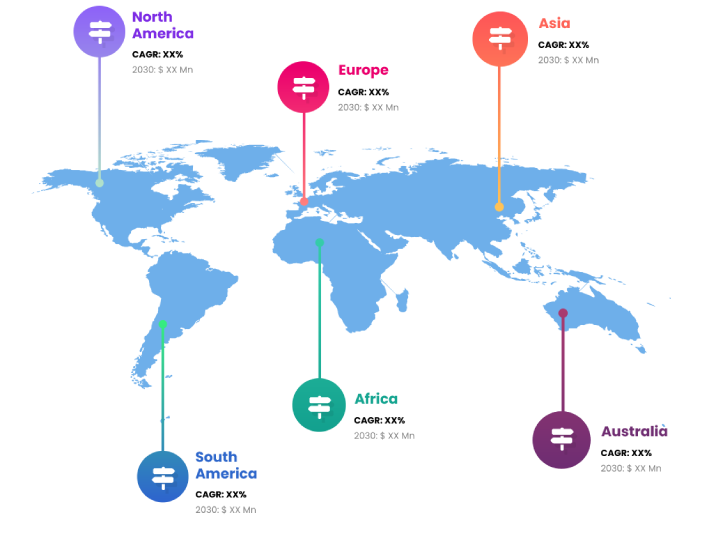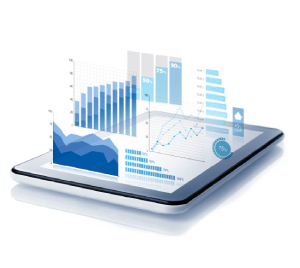
One way to find out how good or bad a water is is to test it. In order to determine the state of water, constant monitoring of its quality is required. Turbidity, radioactivity, dissolved gas concentration, and water conductivity can all be found through testing and analysis of water. Numerous sectors rely on clean water for essential operations, such as farming, fishing, electronics, food production, pharmaceuticals, aquaculture, and forestry. Physiochemical testing and bacteriological testing are the two main categories of water testing.
As the demand for water that is free of chemicals and germs continues to rise, there is a significant increase in the price of water testing equipment. As the need for regulated industries to maintain high standards in the food and beverage, pharmaceutical, and other sectors increases, chemically analyzed water is becoming increasingly common.There is a growing concern over the availability of safe drinking water, and experts believe that this problem will only get worse in the years to come. Groundwater and lakes are two practical and accessible alternatives to dwindling freshwater supplies that people in impoverished and developing nations have little choice but to use to quench their thirst. It becomes more challenging to treat water until it is safe to drink as topography, location, and weather vary, since water quality takes on a completely different profile. The utilization of water for drinking, processing, and agriculture is constrained by a number of problems, such as adulteration, the usage of harmful chemicals and metals, and climate change.
U.S. investment in domestic desalination and water purification facilities, including improvements and new construction, is encouraged by a new Public-Private Partnership (PPP) statute. The growth of the water testing equipment sector is expected to be positively affected by this domestic program that promotes investments in the water treatment industry. Nearly 6 million people would be at danger of not having access to safe drinking water by the year 2050, as to the United Nations World Water Development Report.
The rising need for potable water is a direct outcome of the world's burgeoning population and economy. The demand for water testing equipment is being driven by a combination of factors, including both the scarcity of water resources and the rise in water pollution. During the projected period, the market is likely to be driven by the implementation of rigorous laws by various governments regarding clean drinking water. The United States Environmental Protection Agency (EPA) and the European Environment Agency (EEA) are two of the most influential government agencies working to improve water quality.
Multiple companies are establishing global distribution and production hubs to cater to the expanding water testing equipment sector. There is a lot of competition in the market because there are a lot of new entrants and the incumbent firms are always looking for ways to improve their equipment and discover new opportunities. The need for medical goods has surged due to the increased number of afflicted people. Among the most common medical devices utilized in primary clinical therapy are respiratory support devices, including atomizers, life-support machines, oxygen generators, and monitors. Masks, gloves, and protective eyewear have all seen a dramatic increase in demand as a result of the COVID-19 pandemic.
Due to the growth in the number of COVID-19 cases worldwide, there is a surge in the demand for medical supplies from healthcare professionals as well as the general public, who are taking precautions. The market for personal protective equipment is certain to remain steady and adequate if manufacturers take advantage of the current uptick in demand for medical supplies. Intracranial stents are a growing industry, and COVID-19 is likely to shake things up.
The increasing demand for bottled water can be attributed to several factors, including the need for safe drinking water, concerns about potential illnesses caused by tainted tap water, and the practicality and portability of bottled water. The expansion of the market is impeded by the pollution caused by plastic trash. The usage of bottled water poses health risks to the user. However, new environmentally friendly packaging and flavored water with controlled ingredients might be good for business. The usage of tested water is prevalent in food, beverage, and pharmaceutical products; however, businesses in these industries are finding it difficult to break into expanding markets like China and India due to the stringent government regulations governing the use of water in these products. Businesses are being asked by the government to install water testing equipment and to test their water according to certain requirements.
Report Coverage
Global Water Testing Equipment research report categorizes the market for global based on various segments and regions, forecasts revenue growth, and analyzes trends in each submarket. Global Water Testing Equipment report analyses the key growth drivers, opportunities, and challenges influencing the global market. Recent market developments and Water Testing Equipment competitive strategies such as expansion, product launch and development, partnership, merger, and acquisition have been included to draw the competitive landscape in the market. The report strategically identifies and profiles the key Water Testing Equipment market players and analyses their core competencies in each global market sub-segments.
| REPORT ATTRIBUTES | DETAILS |
|---|---|
| Study Period | 2017-2031 |
| Base Year | 2023 |
| Forecast Period | 2023-2031 |
| Historical Period | 2017-2021 |
| Unit | Value (USD Billion) |
| Key Companies Profiled | Honeywell International Inc. (U.S.), DENSO CORPORATION (Japan), OMNIVISION (U.S.), Alpha MOS (France), AMETEK.Inc. (U.S.), AlphaSense Inc. (U.S.), BorgWarner Inc. (U.S.), Figaro Engineering Inc. (Japan), Emerson Electric Co. (U.S.), General Electric (U.S.), Industrial Scientific (U.S.), SAMSUNG (South Korea), Teledyne Monitor Labs (TML), STMicroelectronics (Switzerland), NXP Semiconductors (Netherlands), Infineon Technologies AG (Germany), Qualcomm Technologies, Inc. (U.S.), Microchip Technology Inc. (U.S.), Texas Instruments Incorporated (U.S.), Bosch Sensortec GmbH (Germany), Johnson Controls (Ireland), and Sony Semiconductor Solutions Corporation (Japan) |
| Segments Covered | • By Product |
| Customization Scope | Free report customization (equivalent to up to 3 analyst working days) with purchase. Addition or alteration to country, regional & segment scope |
Key Points Covered in the Report
- Market Revenue of Water Testing Equipment Market from 2021 to 2031.
- Market Forecast for Water Testing Equipment Market from 2021 to 2031.
- Regional Market Share and Revenue from 2021 to 2031.
- Country Market share within region from 2021 to 2031.
- Key Type and Application Revenue and forecast.
- Company Market Share Analysis, Water Testing Equipment competitive scenario, ranking, and detailed company
profiles. - Market driver, restraints, and detailed COVID-19 impact on Water Testing Equipment
Market
Competitive Environment:
The research provides an accurate study of the major organisations and companies operating in the global Water Testing Equipment market, along with a comparative evaluation based on their product portfolios, corporate summaries, geographic reach, business plans, Water Testing Equipment market shares in specific segments, and SWOT analyses. A detailed analysis of the firms' recent news and developments, such as product development, inventions, joint ventures, partnerships, mergers and acquisitions, strategic alliances, and other activities, is also included in the study. This makes it possible to assess the level of market competition as a whole.
List of Major Market Participants
Honeywell International Inc. (U.S.), DENSO CORPORATION (Japan), OMNIVISION (U.S.), Alpha MOS (France), AMETEK.Inc. (U.S.), AlphaSense Inc. (U.S.), BorgWarner Inc. (U.S.), Figaro Engineering Inc. (Japan), Emerson Electric Co. (U.S.), General Electric (U.S.), Industrial Scientific (U.S.), SAMSUNG (South Korea), Teledyne Monitor Labs (TML), STMicroelectronics (Switzerland), NXP Semiconductors (Netherlands), Infineon Technologies AG (Germany), Qualcomm Technologies, Inc. (U.S.), Microchip Technology Inc. (U.S.), Texas Instruments Incorporated (U.S.), Bosch Sensortec GmbH (Germany), Johnson Controls (Ireland), and Sony Semiconductor Solutions Corporation (Japan)
Primary Target Market
- Market Players of Water Testing Equipment
- Investors
- End-users
- Government Authorities
- Consulting And Research Firm
- Venture capitalists
- Third-party knowledge providers
- Value-Added Resellers (VARs)
Market Segment:
This study forecasts global, regional, and country revenue from 2019 to 2031. INFINITIVE DATA EXPERT has segmented the global Water Testing Equipment market based on the below-mentioned segments:
Global Water Testing Equipment Market, By Product
TOC
PH
DO
Conductivity
Turbidity
Global Water Testing Equipment market, By Application
Laboratory
Industrial
Environmental
Government
Global Water Testing Equipment Market, By Technology
Electrochemistry
Molecular Spectroscopy
Atomic Spectroscopy
Chromatography & Mass Spectrometry
Process Analysers
Global Water Testing Equipment market, Regional Analysis
- Europe: Germany, Uk, France, Italy, Spain, Russia, Rest of Europe
- The Asia Pacific: China,Japan,India,South Korea,Australia,Rest of Asia Pacific
- South America: Brazil, Argentina, Rest of South America
- Middle East & Africa: UAE, Saudi Arabia, Qatar, South Africa, Rest of Middle East & Africa
You will get in-depth and extensive water testing equipment market market research and competitor analysis for your business to help you develop more profound insights into the water testing equipment market Market.
Through INFINITIVE Data Expert is a professional Market Research services, I will identify the water testing equipment market market size, demand & opportunities, growth rate, and target audience with a comprehensive analysis of your competitors.



